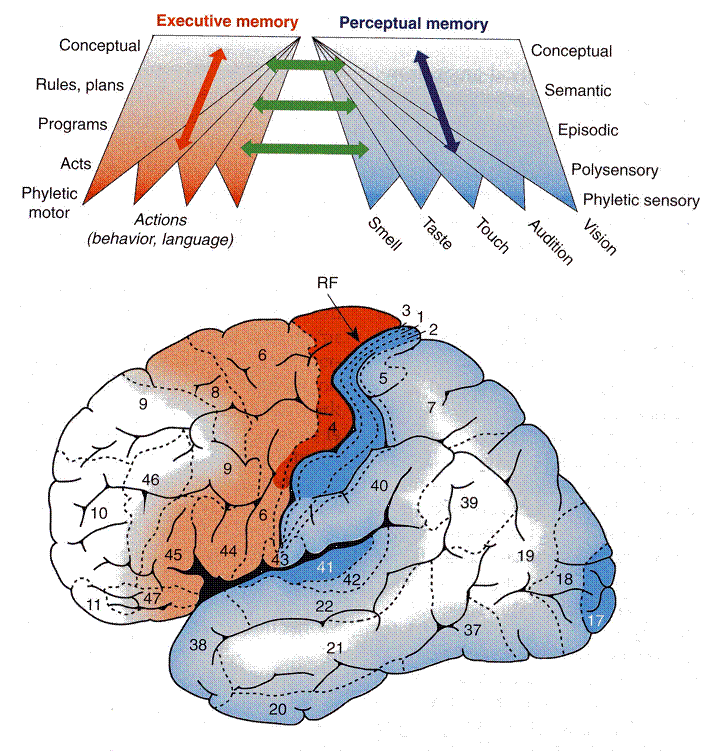

|
Scientific Understanding of Consciousness |
Hierarchical Organization of Memory Networks(Joaquín Fuster; The Prefrontal Cortex, 339) |

|
Schematic diagram of the hierarchical organization of memory networks (cognits) in the human cortex, lateral view of left hemisphere.
Upper: Gradients of development and of organization of cortical cognits, with the same color code as in the map below. Bidirectional arrows symbolize: blue, perceptual cortico-cortical connectivity; red, executive cortico-cortical connectivity; green, reciprocal connectivity between posterior and frontal cortices. Note increasing span and overlap of networks as they develop from the bottom up. As they grow upwards in the hierarchy, nets become more widespread and represent progressively more abstract memory and knowledge.
Lower: Brodmann's cytoarchitectonic map. RF, Rolandic fissure. The posterior cortex is shaded blue to white from primary sensory to association areas, the frontal cortex red to white from primary motor to prefrontal cortex. |
|
A memory network can accrue associations in different levels of the representational hierarchy, up and down. (Fuster; Memory in Cerebral Cortex, 95) An abstract concept at the top of the hierarchy is based on the entire network or networks that supported it in their connections and is widely distributed. (Fuster; Memory in Cerebral Cortex, 95) There will be some concentration of conceptual and semantic representation in certain areas of confluent associations, such as Wernicke's area in posterior association cortex. (Fuster; Memory in Cerebral Cortex, 95) Spreading Activation Model rather than Hierarchical Network ModelAccording to spreading activation theory, semantic memory is organized on the basis of semantic relatedness or semantic distance. (Baddeley, et.al.; Memory, 119) The spreading activation model has generally proved more successful than the hierarchical network model. (Baddeley, et.al.; Memory, 121)
Return to — Neural NetworkReturn to — MemoryReturn to — Sensory Input |